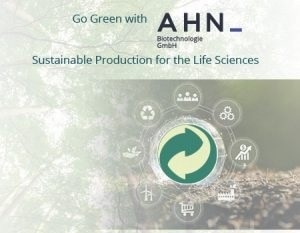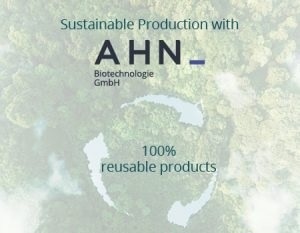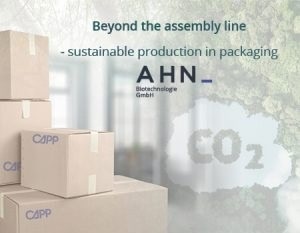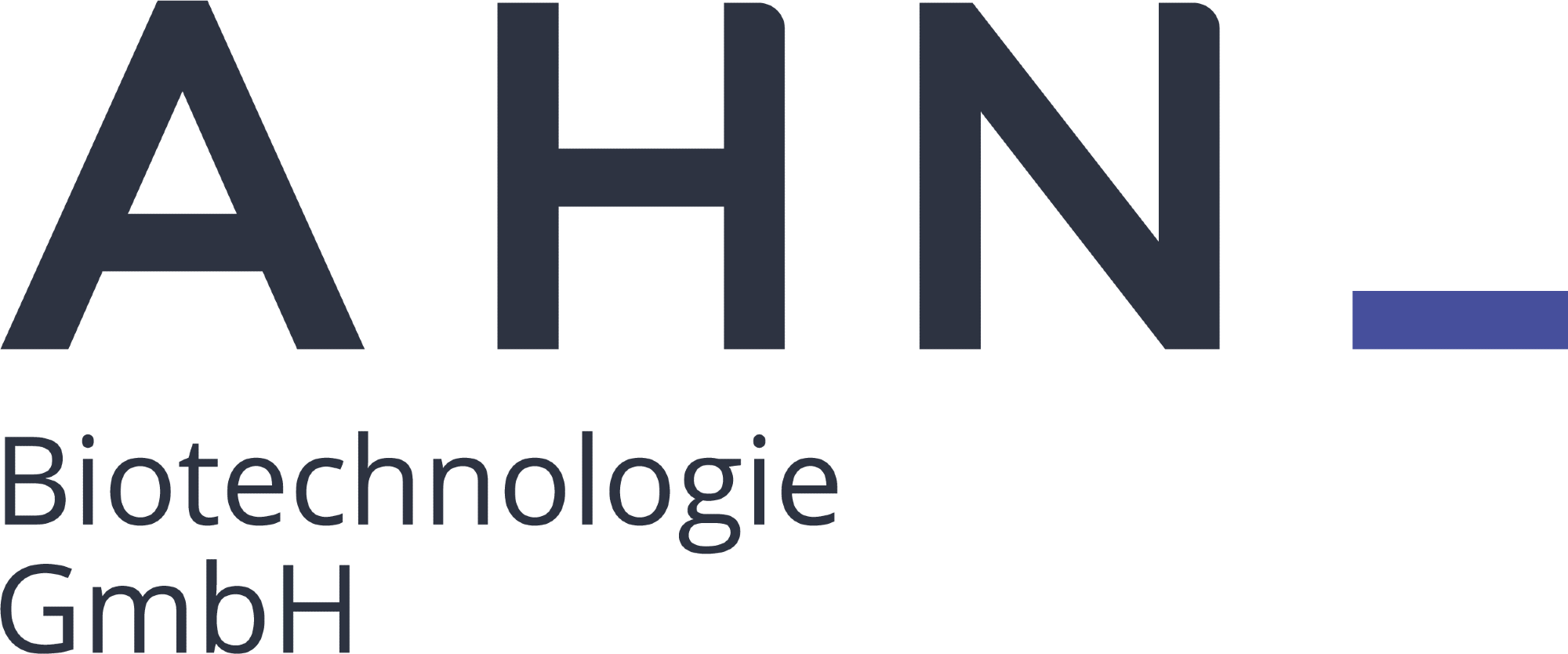AHN Biotechnologie GmbH considers sustainable labware production to be a fundamental aspect of its manufacturing approach and an integral part of human DNA. This approach is reflected in all of the company’s products and reflected in every stage of its production flow and products.

Image Credit: AHN Biotechnologie GmbH
Over the years, AHN Biotechnologie GmbH has implemented numerous positive changes to produce sustainable lab consumables.
AHN Sustainability Approach Video
Video Credit: AHN Biotechnologie GmbH
40% Reduction in Electricity Consumption with Sustainable Lab Consumables
AHN Biotechnologie GmbH’s production facility uses electrical injection molding, which consumes up to 40% less electric power from the grid compared to older hydraulic technologies. This results in lower energy consumption.
The production facility also utilizes the latest electrical injection molding techniques, which offer faster production turnaround and higher quality sustainable lab consumables. This reduces overhead costs and allows the company to supply premium sustainable lab consumables at a lower price than other manufacturers.
In addition, since January 1st, 2023, AHN Biotechnologie GmbH has had zero CO2 emissions during electricity production. The company’s green initiative can be viewed at Electricity Certificate EN.

Image Credit: AHN Biotechnologie GmbH
100% Recycled Plastic for the Production of Sustainable Labware
The positive environmental influence of sustainable labware production is significant. During the last pandemic, the increased global surge for pipette tips emphasized the responsibility of manufacturers to reduce the impact of the products they supply.
In 2021, AHN Biotechnologie GmbH recycled over 11 million pipette tips as part of its efforts to promote a green future. These recycled tips were incorporated into the company’s manufacturing pipeline and were used to produce AHN plastic rack boxes.
Currently, the Nordhausen facility produces 100% of AHN rack boxes using sustainable plastic labware production methods, closing the loop on the production flow by reusing sustainable lab consumables in the production process.

Image Credit: AHN Biotechnologie GmbH
ZERO-Plastic Pipette Tip Racks: A Sustainable Solution for Lab Consumables
CAPP filter pipette tips are innovative, sustainable lab consumables that are supplied in eco-friendly and durable cardboard racks. These racks eliminate 100% of the plastic burden associated with pipette tips.
These cardboard racks are produced using CAPP’s sustainable labware pipeline and offer several benefits compared to plastic racks.
The cardboard material is robust and has a better lifespan than plastic racks, reducing the risk of contamination and error due to the coated surface that minimizes the accumulation of lint.
Additionally, CAPP cardboard racks are easy to recycle and save users valuable benchtop space. More information about these products is available on the “Filter Tips” page.

Image Credit: AHN Biotechnologie GmbH
Sustainable Labware: ZERO-Plastic Cryostorage Solutions
CAPP cardboard cryoboxes are highly sustainable lab consumables for preserving specimens at low temperatures. They are produced from responsibly sourced raw materials using the same approaches of sustainable labware production as the company’s other products.
The result is water-resistant, durable, and thermostable cold storage labware that is easy to recycle.
These CAPP cryoboxes offer consumers the flexibility of using a 9×9 or a 10×10 grid to separate samples. The grid can be removed entirely for larger samples, making this sustainable labware adaptable to several storage situations.
CAPP cardboard cryoboxes have been successful in the market and continue to inspire the company to refine its sustainable plastic labware production methods toward a green future. More information about these products can be found on the “Expell Cardboard Cryoboxes” page.

Image Credit: AHN Biotechnologie GmbH
Sustainable Plastic Labware: 100% Reusable Products
AHN Biotechnologie GmbH’s sustainable labware production pipeline produces plastic rack boxes that can be reused multiple times over, including multiple autoclave and cold-storage cycles.
This helps to reduce the environmental impact of plastic and ensure that these sustainable lab consumables products have a longer lifespan in the laboratory.
When these products reach the end of their life, they have numerous upcycling options that contribute to a cleaner environment. The company’s sustainable plastic labware production approach balances the need to produce high-quality plastic products with the responsibility to address the global plastic burden.

Image Credit: AHN Biotechnologie GmbH
Sustainable Labware Reduces Plastic Use by 59% and Transportation Space by 65%
The transportation of sustainable labware is a crucial aspect of sustainable plastic labware production. By optimizing the packaging of raw materials and sustainable labware, CAPP can reduce the carbon footprint of product shipments and ensure efficiency.
One example of this is the Expell Tip Refill System, which reduces the amount of space required for conventional tip packaging and can save up to 65% cargo space per shipment. This allows for more sustainable lab consumables to be shipped at once, maximizing the load capacity of the transportation method.
These sustainable labware production techniques also reduce excess emissions from transport vehicles by decreasing the trips required for each delivery.
Additionally, the Expell refill tips can save up to 59% plastic in a lab compared to traditional racked pipette tips, leading to lower carbon emissions during waste disposal and transportation, as well as more competitive pricing for consumers.
More information about these products is available on the “Expell Reloading Tips” page.

Image Credit: AHN Biotechnologie GmbH
Eco-Friendly Packaging for Sustainable Plastic Labware Production
As CAPP’s sustainable lab consumables are made ready to ship, sustainable labware packaging begins at the tail end of the sustainable plastic labware production line.
Traditional packaging of laboratory consumables requires a large amount of plastic material to protect products during shipping.
However, AHN Biotechnologie GmbH has implemented a “responsible reduction” approach to packaging by shipping sustainable labware with less plastic and providing high-quality products while also being more environmentally friendly.
For products that require plastic packaging for optimal protection, they manufacture the packaging material from recyclable polypropylene, which is then recycled back into sustainable plastic labware through the green dot program.

Image Credit: AHN Biotechnologie GmbH
Green Dot Certification: A Commitment to Sustainable Plastic Labware Production
All products from CAPP are part of the Green Dot Certification program (German ‘Der Grüne Punkt’), which ensures that all the packaging is recyclable. This is a global program that facilitates the recycling of sustainable labware and packaging by returning them to manufacturers at the end of their lifespan.
The Green Dot Certification program enables CAPP to partner with global clients and ensure that sustainable lab consumables remain sustainable by being recycled and returned to the sustainable plastic labware production process.
This aligns with the company’s commitment to a closed-loop approach to sustainable plastic labware production.
The Green Dot Certificate EN
Note: Der Grüne Punkt was founded in 1990 as the first dual system in the world. It provides a national collection of used sales packages and collects raw materials from them for the closed-cycle economy. Der Grüne Punkt is currently a leading provider of take-back systems.
To relieve industrial firms and retailers of their take-back and recovery laws under the German Packaging Ordinance, Der Grüne Punkt established a dual disposal system in addition to the public-sector waste disposal service.
Since 1991, it has been providing a national collection of used sales packages and obtaining raw materials from them for the closed-cycle economy.
The Green Dot (“Der Grüne Punkt”) is a globally protected trademark and is widely used in many countries as a financing symbol for packaging recycling. Der Grüne Punkt is a founding member of the European Grüner Punkt umbrella organization PRO Europe. For more information, see the About Us page on the Der Grüne Punkt website (gruener-punkt.de)

Image Credit: AHN Biotechnologie GmbH
Ecotrade Program Reduces Waste with Sureenerle Lab Consumables
In addition to recycling initiatives for used sustainable labware and packaging, a recycling program for old pipettes has been implemented. Customers can send their old, non-functioning pipettes to be recycled through a local distributor.
These pipettes will be sent to a sustainable plastic labware production facility where they will be disassembled, and several materials will be recycled per regulatory requirements.
This program is not limited to CAPP-branded pipettes and accepts pipettes from other brands as a service to customers in their responsible recycling efforts. Choosing CAPP actively contributes to global lab waste reduction. More information can be found on the ecopipette Single Channel page.

Image Credit: AHN Biotechnologie GmbH
AHN Biotechnologie GmbH: A Partner for Sustainable Lab Consumables
The success of CAPP’s adoption of sustainable plastic labware production can be attributed to the dedication and commitment of customers, the leadership of administrative staff, and the support of all employees.
Sustainable plastic labware production is a key focus for the company’s future, and it will continue to lead the way in developing cost-effective sustainable labware through sustainable plastic labware production techniques.
By purchasing CAPP sustainable lab consumables, customers are partnering with the company in protecting the environment. The use of sustainable plastic labware production by CAPP does not sacrifice quality and can help save the environment while also being cost-effective.

Image Credit: AHN Biotechnologie GmbH

This information has been sourced, reviewed and adapted from materials provided by AHN Biotechnologie GmbH.
For more information on this source, please visit AHN Biotechnologie GmbH.